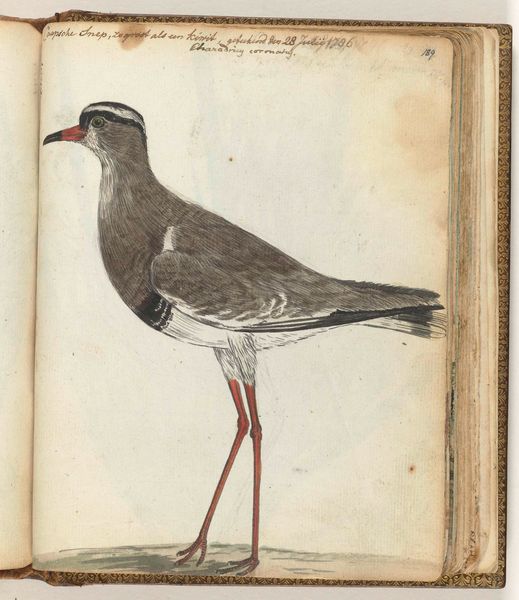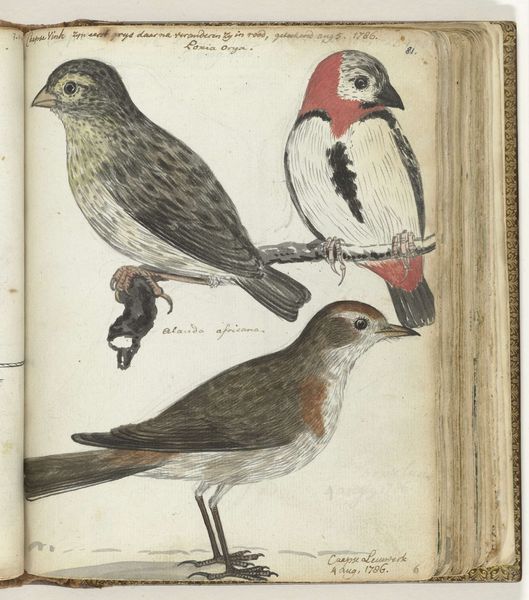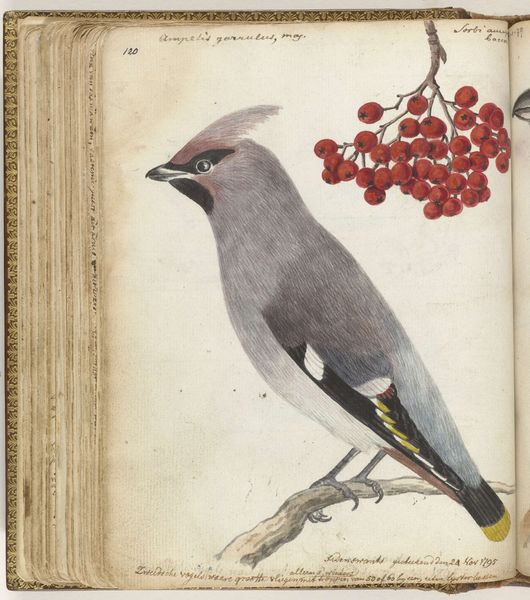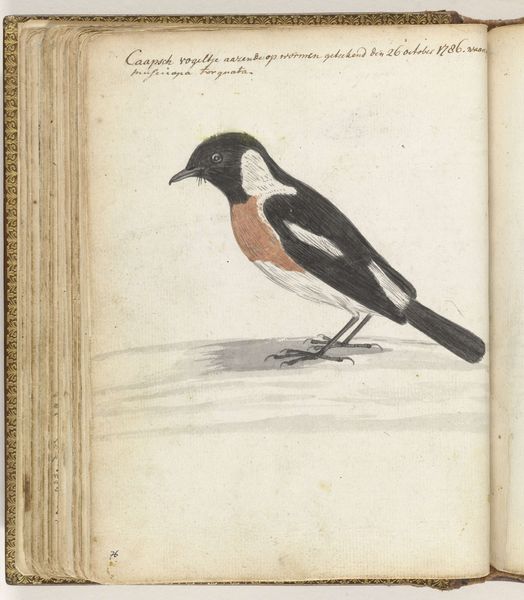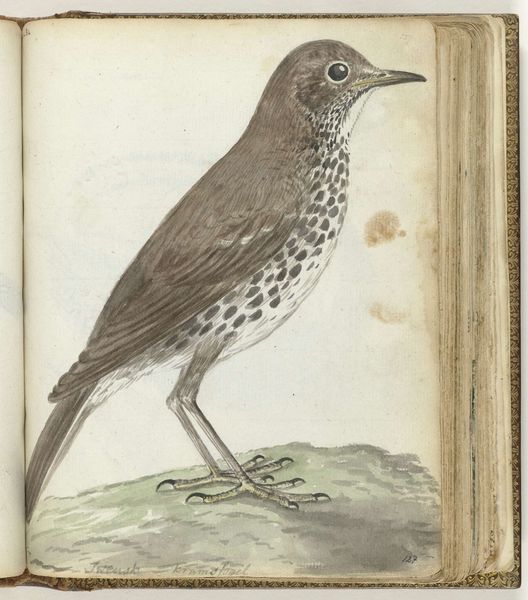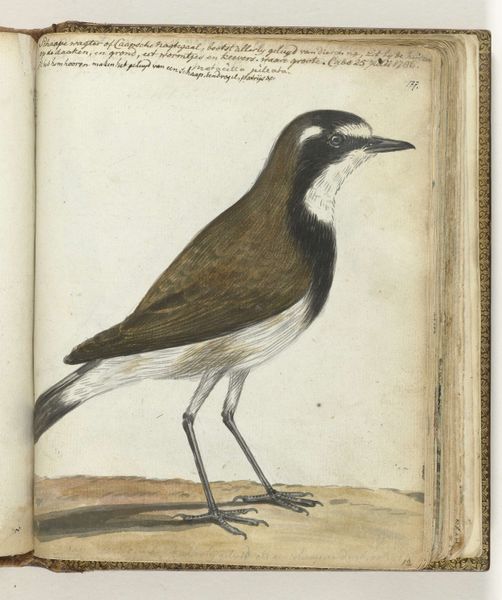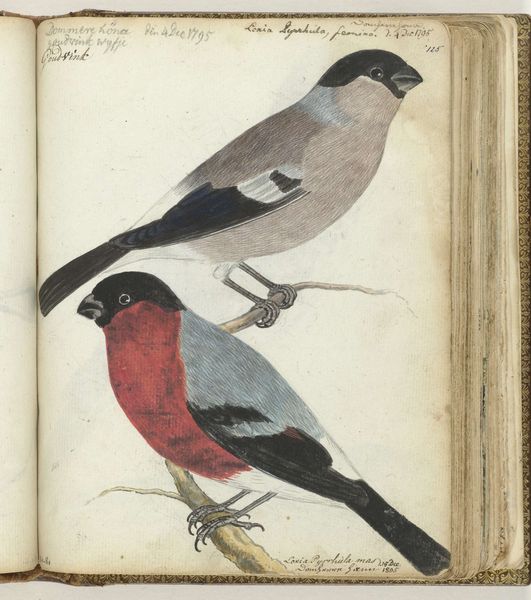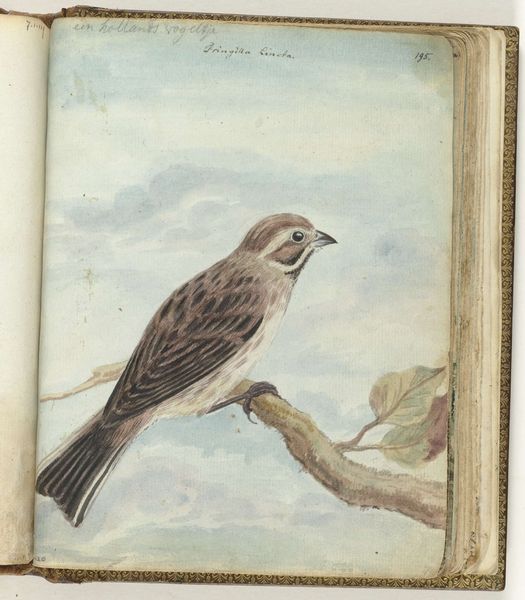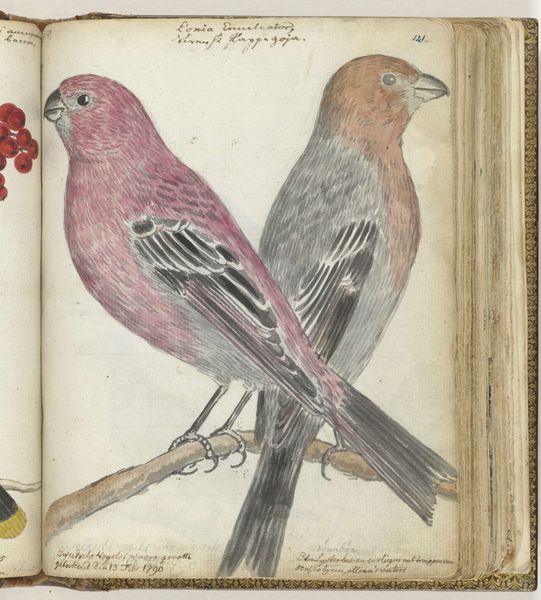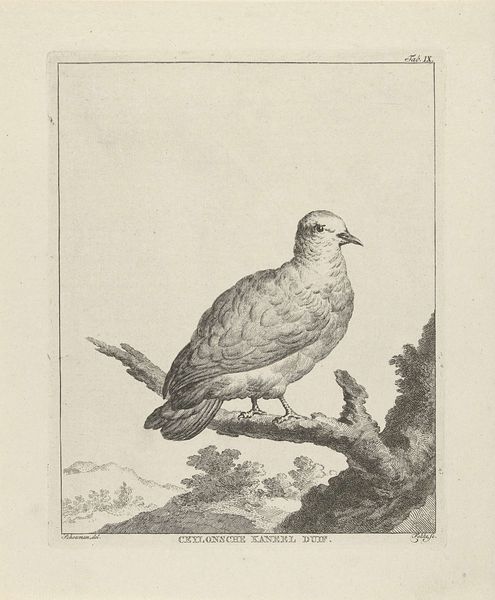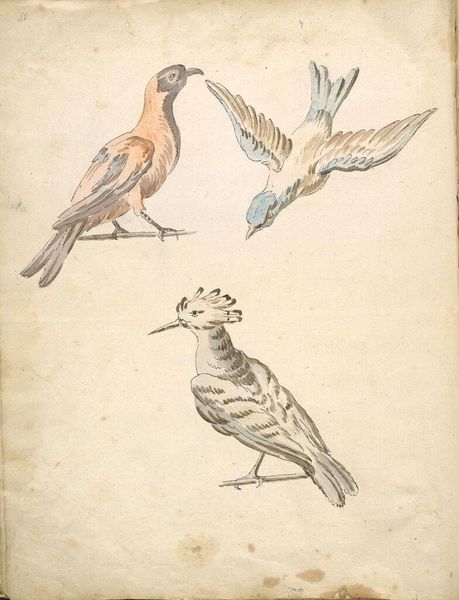
drawing, watercolor, pencil
#
drawing
#
water colours
#
watercolor
#
pencil
#
academic-art
#
watercolor
Dimensions: height 195 mm, width 155 mm
Copyright: Rijks Museum: Open Domain
Curator: This watercolor and pencil drawing is titled "Kaapse duif," or Cape Dove, and is attributed to Jan Brandes, dating possibly to 1787. Editor: There’s an immediacy to it, isn’t there? The composition draws your eye down the length of the bird, emphasizing the elongated tail feathers, like a gray-blue waterfall. The bird’s almost regal perched there. Curator: Absolutely, and considering Brandes was a Dutch minister and artist working in the late 18th century, stationed in South Africa, it tells us something about the Dutch East India Company’s interest in cataloging the natural world during that period. Think of it within a colonial context, driven by scientific exploration and resource management. Editor: True, but looking at Brandes’ application of watercolor, particularly the almost translucent quality of the feathers around the neck, you sense more than just a clinical rendering. The textures are delicately evoked through tonal variation; note the contrast between the sleek head and the soft plumage elsewhere. Curator: That delicacy could be interpreted as fitting within the broader artistic conventions favored by the colonial elite, creating idyllic and perhaps sanitized images of the regions they exploited, but even then these images had a certain circulation among natural history enthusiasts, reinforcing European authority through supposed mastery of knowledge. Editor: Still, there's a real connection to form, how he's captured the subtle curve of the bird’s back, almost inviting a touch. This dove is less about power and more about this specific moment of observation, captured skillfully with simple strokes. Curator: I concede there's beauty in its rendering. But one has to remain conscious of the larger framework that enabled its creation. This piece, and many like it, were tools within a bigger colonial project, irrespective of an individual’s intentions. Editor: And yet, looking at this feathered cascade of color, one can admire both the delicate execution of Brandes’ technique and be reminded of the complexities inherent in art and its historical situation. Curator: Indeed. This work serves as an entry point into discussions around the nature of colonial representation and its complex ties to seemingly straightforward artistic endeavors.
Comments
No comments
Be the first to comment and join the conversation on the ultimate creative platform.
